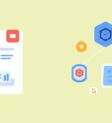
No-code AI tools are quickly changing the way businesses and individuals approach artificial intelligence. Once only accessible to technical experts, these platforms now allow anyone to harness the power of AI without writing a single line of code. In this article, we’ll explore what sets modern no-code AI tools apart, top platforms you should know, real-world use cases, pricing comparisons, step-by-step setup guidance, and the rapidly evolving future of this technology.
The Emergence and Impact of No-Code AI Tools
The rise of no-code AI tools has fundamentally shifted software development and intelligent system deployment. In the past, building AI-powered solutions required deep programming knowledge and significant time investments. Today, intuitive platforms let users build, train, and deploy smart systems through drag-and-drop interfaces and easy logic flows—no programming required. This shift not only accelerates development but also widens access, empowering analysts, marketers, educators, and entrepreneurs to implement AI-driven solutions for their unique needs. With growing demands for automation and customization, the accessibility of no-code AI fosters a culture of rapid innovation and removes traditional barriers between ideas and their realization. For more insights on productivity gains from no-code platforms, see this productivity case study.
Key Features of Modern No-Code AI Tools
A standout no-code AI tool is defined by more than just its promise of easy AI deployment. The best platforms provide:
- User-Friendly Interface: Minimal technical friction for beginners and professionals alike, offering dashboards that are easy to navigate and configure.
- Seamless Integrations: Ability to connect with popular databases, cloud services, and third-party apps, streamlining data import, model deployment, and automation across entire tech stacks. For a deeper dive into integration methods, check out TheAgentBot Integrations.
- Scalability: Support for projects of all sizes—from personal prototypes to enterprise-level deployments—without slowdowns or forced migrations as needs grow.
- Community Support: Access to engaged user forums, knowledge bases, tutorials, and responsive customer service encourages experimentation and learning while solving real-world problems.
Collectively, these features make no-code AI tools accessible at the start but powerful enough to support long-term productivity, growth, and innovation.
Top No-Code AI Platforms to Know in 2025
The no-code AI landscape is diverse and evolving rapidly. Here are several leading platforms empowering users—and what sets each apart:
- Bubble: While primarily a no-code web app builder, Bubble excels at integrating with AI services via plugins and APIs, enabling rapid prototyping of intelligent apps with capabilities like chatbots and recommendations.
- Zapier: Renowned for workflow automation, Zapier connects thousands of apps, bringing AI-driven triggers and actions to everyday business tasks, such as email classification and sentiment analysis.
- Peltarion: Focused on democratizing deep learning, Peltarion offers drag-and-drop tools for building, training, and deploying sophisticated machine learning models without coding.
- Microsoft Power Automate: With built-in AI Builder models, Power Automate enables users to infuse common business processes—like document review or approval workflows—with predictive AI, leveraging deep ties to Microsoft 365 and enterprise standards.
- Akkio: Purpose-built for business analytics, Akkio makes predictive modeling and data enrichment in sales, marketing, and finance accessible to non-technical teams via a simple interface.
Each tool addresses specific needs in the no-code AI niche, reducing complexity and widening the gateway for innovation. To explore more no-code agent setup strategies, see our custom AI agent setup guide.
Real-World Use Cases: No-Code AI in Action
No-code AI tools are driving transformation across a variety of domains. Here are some illustrative examples:
- Customer Service Automation: A regional bank deployed a no-code chatbot to answer common queries about accounts and loans. This reduced call center load by 30%, and staff could quickly update the bot’s workflows using visual templates.
- Workflow Automation in Healthcare: A clinic used a no-code platform to automate appointment scheduling, letting patients book and receive reminders through a conversational agent integrated with backend records. Staff were freed to focus on patient care.
- Personalized Marketing Campaigns: An e-commerce retailer created a recommendation engine using a no-code platform. Marketers trained the AI on sales data and embedded real-time product suggestions on their website—no coding required.
- Internal Knowledge Support: A logistics company launched an internal AI agent using a document ingestion tool to answer HR policy questions, keeping information accurate and reducing support tickets.
These cases underscore how organizations use no-code AI tools to solve immediate operational challenges—enabling everything from improved customer experiences to streamlined internal processes. For additional examples and tips on AI use cases, visit Best Use Cases for TheAgentBot in 2025.
Cost, Limitations, and Best-Fit Scenarios for No-Code AI Platforms
Choosing a no-code AI tool isn’t just about ease of use—it’s about finding the right fit. Here’s what to consider:
- Pricing Models: Costs can range from pay-as-you-go (e.g., Google AutoML, Microsoft Power Platform, charging by usage) to feature-based subscriptions (e.g., Bubble, Peltarion). Entry pricing could be as low as $20–$50 monthly, but advanced tiers scale quickly to meet higher business demands.
- Feature Limitations: Drag-and-drop setups often trade some flexibility for simplicity. Certain platforms (like Lobe or Teachable Machine) are excellent for image or audio projects but less versatile with text or tabular data. Usage caps, limited integrations, and restrictions on customization are all factors to weigh.
- Best-Fit Scenarios: Tools like Lobe and Teachable Machine shine for rapid prototyping and education. Bubble and Power Platform are ideal for business applications needing integrated workflows. If you need enterprise deployment and scalability, solutions such as Google AutoML or DataRobot offer broad integrations but at higher complexity and cost.
The most effective no-code AI platform will align your goals, data types, expected usage, and budget requirements, helping you maximize ROI and minimize frustration. For help mapping out use cases, our step-by-step multi-task AI agent guide provides practical guidance.
How to Get Started: Building Your First No-Code AI Agent
Launching your first AI agent with a no-code tool can be straightforward if approached with the right steps:
- Define Your Goal: Pinpoint the exact task or process you expect the AI to automate—be it content generation, support ticket sorting, or data analysis.
- Explore Platforms: Review top tools like Zapier, Bubble, Microsoft Power Platform, or Peltarion, comparing features, templates, and costs to your needs.
- Leverage Templates: Most platforms offer templates for common tasks. Start with these, as they can dramatically speed up setup.
- Register and Learn: Sign up, complete onboarding tutorials, and familiarize yourself with the dashboard, particularly workflow and integration modules.
- Customize and Integrate: Configure input sources, output formats, rules, and connect with other applications, taking advantage of drag-and-drop or form-based editing.
- Test Thoroughly: Use preview modes and built-in tests to ensure the agent works as expected. Adjust settings based on feedback.
- Deploy and Monitor: Roll out your agent to its environment—website, messaging app, or internal system—then monitor its performance using the platform’s analytics.
Checklist:
- Clear goal defined
- Right no-code AI tool selected
- Template or example chosen
- Platform account created and onboarding completed
- Setup of workflows and integrations
- Successful testing performed
- Live deployment and analytics monitoring
For step-by-step orientation, read our Beginner’s Guide to TheAgentBot.
The Future of No-Code AI Tools: Trends to Watch
The evolution of no-code platforms is tightly linked to the future of AI accessibility and innovation. Here’s what to expect:
- Smarter Automated Workflows: User-friendly tools will allow non-programmers to design highly advanced, automated processes, integrating more powerful AI models through simple drag-and-drop interfaces.
- Expanding Libraries of Prebuilt AI: Ready-to-use modules for text, vision, sentiment, and more will become commonplace, making advanced tasks accessible with minimal setup.
- True Democratization: As templates and wizards improve, even micro-businesses and hobbyists will deploy sophisticated AI agents.
- Rich Integrations: Seamless links to both public and proprietary data sources will expand what no-code AI agents can achieve, making them even more context aware.
- Greater Security & Governance: Expect an increased focus on ethics, compliance, explainability, and ongoing monitoring, giving confidence to enterprises and regulated sectors.
- Collaborative Innovation: Next-generation tools will foster real-time co-building, with community-driven exchanges of agents, templates, and expertise.
These trends will further accelerate innovation, empower a new generation of non-technical builders, and pave the way for AI solutions tailored to almost any use case or industry. For advanced strategies and integration best practices, see Connecting AI Agents to APIs for Smarter Automation.
As the capabilities of no-code AI tools expand, the divide between those who create with AI and those who do not will narrow dramatically—making this the ideal time to explore what these platforms can do for your team or business.






